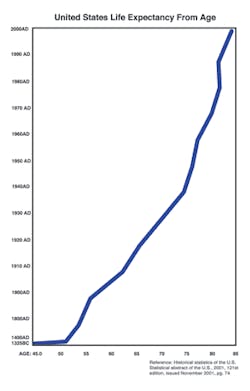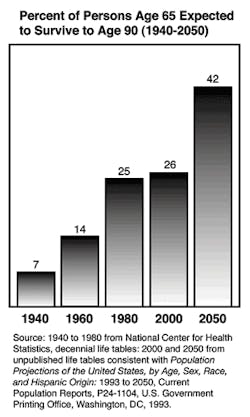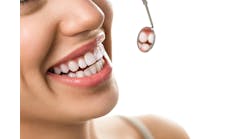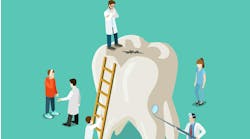by Michael Schuster, DDS
The "golden age of dentistry" is now. There has never been an opportunity to experience more fulfillment, enjoyment, and yes, profitability in dentistry than there is today.
This is especially true for dentists with advanced training in esthetic dentistry, occlusion, implants, orthodontics, and prosthetics.
Dentists who are able to resolve complex dental disabilities, issues of esthetics, tooth wear, or tooth replacement have a great opportunity in this wonderful time. Now is the time to make a big difference.
Dentistry at this level changes and transforms lives. In the process of transforming the lives of our patients, our own lives are transformed. This is the best part. I've been blessed to experience this in my own practice and in the Schuster Center's work as well. I would go so far as to say that those who visit the Schuster Center and stay connected do so because it is life transforming.
We understand that once your life as a dentist transforms, you're eager to help patients transform their lives. The reverse is also true. When you begin to transform your patients' lives, it will change yours. The business of changing lives is perpetual.
Our practices are filled with lives waiting to be transformed, waiting for us to make a difference, which we just happen to do through dentistry. The level of dental disability our patients present coupled with the level of care we deliver directly determines the transformation of our lives and theirs.
Allow me to digress: For the first time in 30 years, the Egyptian government has allowed the artifacts of the pharaoh Tutankhamen and his ancestors to travel abroad. We think of Tutankhamen as the "boy king" because he came to the throne of Egypt at the age of 10 in 1334 B.C., and died at 19 in 1325 B.C. By the standards of his day, he died at middle age.
Yes, Tutankhamen died at 19 — a time when the average life expectancy was 25. And even that, in the great scheme of things, was a significant triumph for civilization. It gives us a reasonable starting point for an informed look at the accelerating curve of increasing life expectancy.
In the roughly 3,000 years from Tutankhamen's time to the year 1400 in Europe, the average life expectancy went up from 25 to 30. Imagine that. From the deepest antiquity to the dawn of the Renaissance — 100 generations perhaps — life expectancy increased five years.
And then an astonishing thing happened: between 1400 and 1800 in Europe and America, life expectancy leapt forward another seven years to 37. Think of it, not in percentage terms, but in terms purely of the lengthening of life. Up five years in three millennia — and then up seven years in just 400 years!
Well, you say, that's only to be expected. Human understanding of health and disease, reduced infant and child mortality, and our ability to intervene in sickness and injury surged ahead as never before, if only from a low base. Precisely my point.
But wait. Look at the next 100 years to 1900. Yes, the golden age of Jenner, Lister, Pasteur, and Koch. There would have had to have been a great acceleration of life expectancy at such a time ... and there was: 10 years in just one century! A child born in Western Europe or the U.S. in 1800 had a life expectancy of 37. In 1900 that figure reached 47.
In the last century, something occurred that even Pasteur might have placed beyond the realm of possibility. Life expectancy rose 30 years — from 47 to 77 — in just one century! Well within the lifespan of three generations: grandparent, parent, and child. It may be too much for the normal mind to grasp. Perhaps that's why, when it comes to our letting life expectancy dictate our retirement strategies and our practice and lifestyle strategies, we simply cannot grasp it.
Perhaps many of us are still living in the past century when it comes to how we approach our lives, our patients' lives, customs, activities, and practices.
Before we get into the practical aspects of an accelerating curve of increasing life expectancy, step back for a moment and look at it as a whole. Graph it, if you will. At first, and for a very long time, the curve is all but flat. (See Fig 1.) It is rising, yes, but rising nearly imperceptibly as to be statistically meaningless. Then across the middle third of the last millennium it breaks out.
Two hundred years ago, the upward slope becomes very steep. A century ago, the curve bends toward the vertical. Today, as 70 to 80 million people crowd toward retirement age over the next two decades — an event without precedent in human history — the curve of life expectancy is going straight up.
Lengthening life expectancy is suddenly revealed to be not linear at all, but exponential. The exponent itself is rising.
Longevity Risk is another name for Lifestyle Risk
We're told that 70 is the new 50. I, for one, am sure it's true. But what if 100 becomes the new 70? At a moment when the joint life expectancy of a nonsmoking couple at average retirement age 62 (born in 1945) is already 92, are we prepared to rule this out? How will this impact our practices in the years ahead? (See Fig. 2.)
I realize that our culture has never been as unhealthy as it is today. Diabetes, cancer, stroke, and heart disease are increasing, but people are living longer. Many who exercise an hour each day, eat low glycemic diets, balance their lives, reduce their stress and learn how to recreate, may live longer. But many will become ever more disabled physically, mentally, and emotionally as they live longer.
How will this impact you and your practice? In enormous ways.
Tooth wear is at an epidemic rate in our society
Increasing diseases which evidence themselves in the mouth will drive more clients in their 60s, 70s, and even 80s to seek more long-term solutions to their dental problems. I've never met a person who wants to look older. Fifty-five billion dollars a year is spent on weight- loss programs. It's not only the "in crowd" that wants an attractive smile, it's people in their 70s and older. There is a large contingent of the aging population interested in a health-centered lifestyle.
It's not fashionable to go around toothless. Patients who lost their teeth at an early age because of ignorance or economics will seek implant-borne teeth to preserve the bone they have into their 80s and beyond. Patients like my wife and me are seeking "age reversing" medicine to not only increase our lifespan, but to ensure we can continue to live an active lifestyle for the rest of our lives.
Dentistry is not simply about increasing the length of our lives, but also the quality of our lives
Patients who have bite or occlusion problems where damage is being done to the joints, periodontium, and the ability to chew and function, will seek longer-lasting solutions when they realize they will live longer.
Their questions will be: How shall I live? What will life be like for me? Will I be able to chew, speak, or smile naturally?
This is the age of esthetic dentistry. This is the age of preserving a youthful appearance and the ability to chew and function. A new age has dawned. If dentists simply patch worn-out bodies, eventually their own bodies will wear out. Their emotions and psyche will be drained. On the other hand, if dentists are able to engage patients in long-term planning for a health-centered future, the dentists will find their own futures changed as well.
This is the golden age of dentistry for those who understand that life expectancy is and will continue to radically change the future of dentistry, as dentists radically influence and change the lives of the patients they serve.
There has never been an opportunity to make a greater difference in the lives of our patients than right now, right in our own towns, right in our own practices. Not only will we transform lives, but our own lives will be transformed in ways we never dreamed possible. With the right intention and the right heart, the proper skills and capabilities, we can make a difference and love our practices and lives like never before. Never.
Carpe diem.
A practicing dentist, Dr. Michael Schuster founded The Schuster Center in 1978. Guiding more than 3,500 graduates to achieve wealth and freedom, The Schuster Center is the first business school created exclusively for dentists. It will celebrate 30 years in 2008. Dr. Schuster is a cadre and former director at The Pankey Institute, adjunct faculty at The Dawson Center, OBI, and LSU Cosmetic Continuum. Email him at [email protected]








